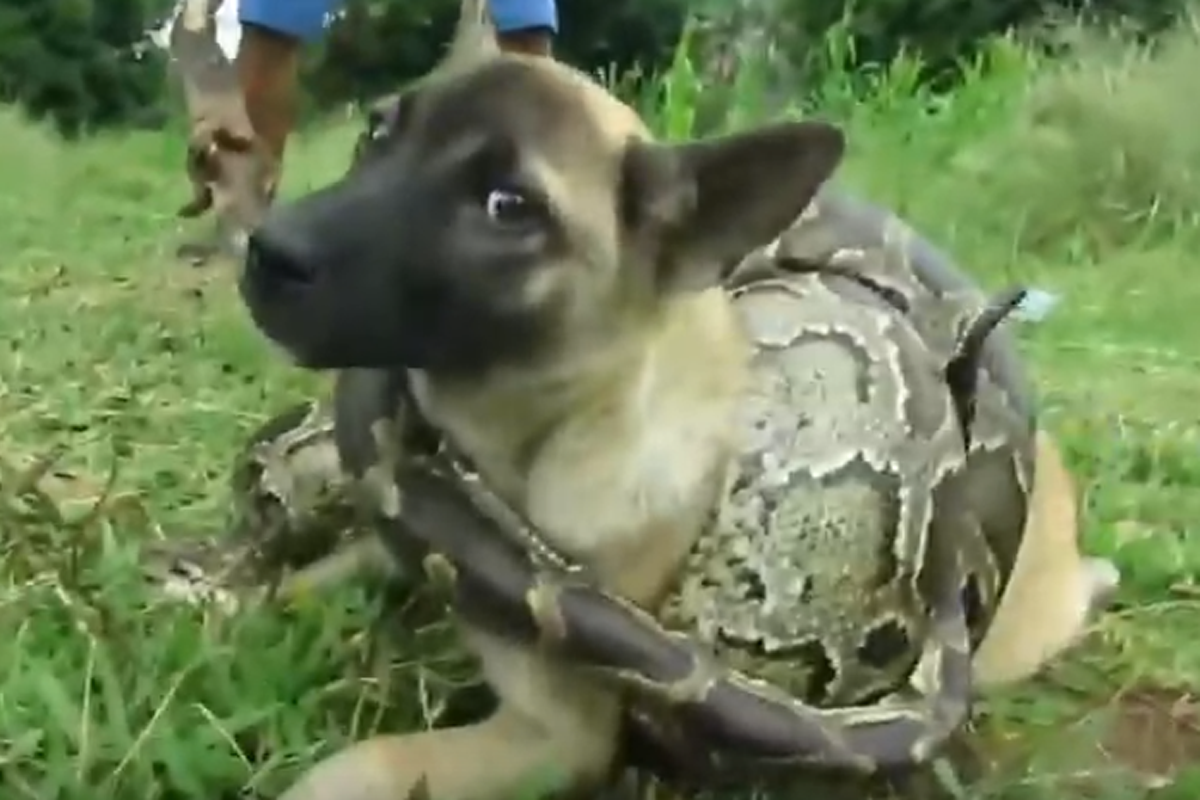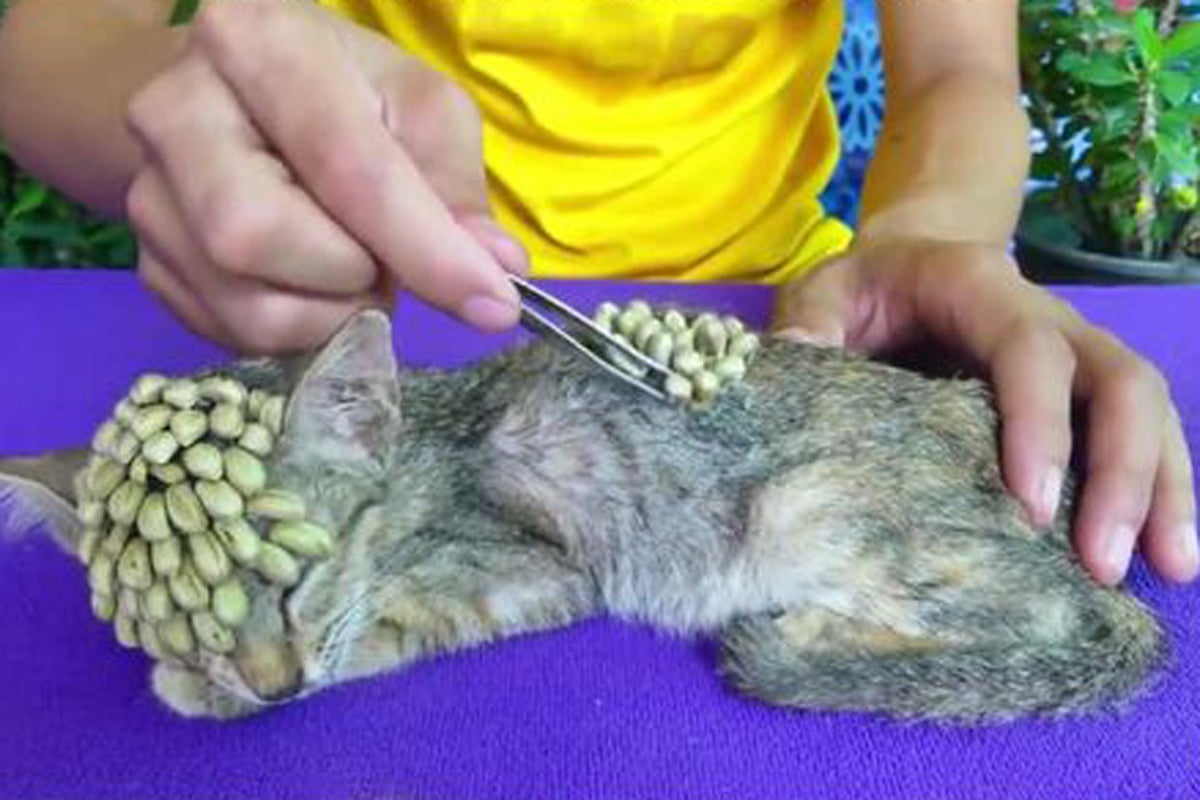YouTube, Facebook and TikTok ‘earning millions’ from horrific animal-cruelty videos
‘These corporations have the power to remove these vile videos, and it’s reprehensible that they haven’t,’ says charity boss

Thousands of animals globally are tortured, maimed and subjected to prolonged suffering for grisly videos that earn money for the world’s biggest social media platforms, YouTube, Facebook and TikTok, according to a year-long investigation.
The horrors include baby monkeys being buried alive or tormented; kittens being stepped on or set alight; people eating live animals and puppies and ducks being crushed to death by snakes.
In videos logged over just three months last year, it’s estimated that YouTube earned up to $12m (£8.8m) from the sharing of animal cruelty content, and the creators themselves earned nearly $15m (£11m).
The stream of videos depicting cruelty “on a monumental scale” – seen by billions of viewers – has prompted calls for social-media bosses to shut down rogue accounts and take responsibility for their content.
Between July last year and this month, a coalition of animal-welfare organisations working in Asia documented 5,480 links to videos containing animal cruelty on YouTube, Facebook and TikTok, posted as entertainment, but also earning money from hits and shares.
The investigators said these videos alone had had about 5.3 billion views, highlighting the scale of the problem.
Analysis of the data showed that producers of the videos can become almost “celebrity-like”, with some channels gathering millions of followers, according to the Asia For Animals Coalition.
Instagram has previously been condemned for allowing videos and images of animal cruelty – some of them violent – on its website, masquerading as entertainment.
Indonesia, the US, Australia, Cambodia, South Africa and South Korea featured highly as countries where cruelty content was made, the new study found.
The UK was the 14th-highest country or region for creation of cruelty content – which was mostly hunting-related but also the deliberate baiting of birds and squirrels for shooting – but was the third-highest country for cruelty content being uploaded.
A video from Thailand last year featured a chimp dressed up spraying disinfectant; another showed a puppy being crushed by a python so the filmmakers could stage a rescue, and a third recorded a dog being set on a live kitten – all on YouTube.
The report authors write: “We documented shocking footage of individual wild animals kept as pets and repeatedly abused on camera. Kittens and other young animals were set alight as the filmmakers laughed.
“Live burials, partial drownings, beatings and psychological torment were also documented.”
YouTube had the most cruelty videos, the investigators said, but Facebook has allowed encrypted groups and pages where unacceptable content can be shared undetected. On Facebook and YouTube, most cases were “obvious and intentional”, the report said.

Birds, dogs and cats are most commonly abused, but some species used are classed as threatened, including pangolins, bears, gibbons, pythons and macaque monkeys.
Adverts are embedded in cruelty content, so companies and organisations were unwittingly profiting, including several animal-welfare and conservation groups – some of which have since taken action, the report notes.
Alan Knight, chief executive of International Animal Rescue, said: “It is inexcusable for social media companies to turn a blind eye to the sickening scenes of animal abuse posted on their platforms. It is their moral responsibility to crack down on content showing animals forced to suffer for entertainment and financial gain.
The UK was the third-highest country for cruelty content being uploaded
“There’s no doubt these media corporations have the power to remove these vile videos, and it’s reprehensible that they haven’t done so already.
“They feed the basest instincts of a depraved minority and must be denied a platform and an audience to stamp them out.”
The coalition is calling on YouTube, Facebook, TikTok and other social media platforms to work with experts to develop “robust” monitoring systems to identify and remove cruel content without relying on viewers reporting it.
The organisations say that even trying to talk to bosses at the online platforms is difficult. Adam Parascandola, of Humane Society International, described the content as “deeply disturbing but largely overlooked”, saying: “The devastating data revealed by this only scratches the surface in exposing the shocking extent of cruelty promoted on social media.
“Now more than ever, it’s time for social media platforms to stop profiting from animal suffering and instead take action to end this devastating cruelty for clicks.”
In the past, the social-media channels have insisted they do not allow cruelty to be shown, and remove content breaching their guidelines.
But the report authors say they have seen videos remaining live despite being reported multiple times, or channels that were shut down starting up again under a different guise.
Nick Stewart, of World Animal Protection, said: “Exploitation of wildlife is happening on a monumental scale, impacting the welfare of billions of individual animals. We must call out companies that are complicit in this exploitation and urge them to take responsibility for a solution.”

A TikTok spokesperson said: “We cannot comment on the specifics as we have not seen the specific cases. However, as a general principle, our community guidelines make clear that we do not tolerate animal cruelty on our platform, and we take action when people violate these rules - up to and including permanently banning them from the platform. We use a combination of technology and human moderation to identify and remove content that breaches our community guidelines.”
Those guidelines ban “animal cruelty and gore”, as well as “dismembered, mutilated, charred or burned animal remains” and animal slaughter.
A YouTube spokesperson said: “Content depicting violence or abuse toward animals has never been allowed on YouTube. We enforce our policies using a combination of machine learning and human review, and periodically review our policies to ensure they are current. This work is ongoing.
“Earlier this year, we expanded our violent and graphic policy around animal abuse content, to more clearly prohibit content featuring deliberate physical suffering or harm to animals, including content featuring animal rescue that has been staged and places the animal in harmful scenarios.”
The Independent also asked Google to comment on behalf of Facebook, but did not receive a response.
Join our commenting forum
Join thought-provoking conversations, follow other Independent readers and see their replies
Comments

Bookmark popover
Removed from bookmarks